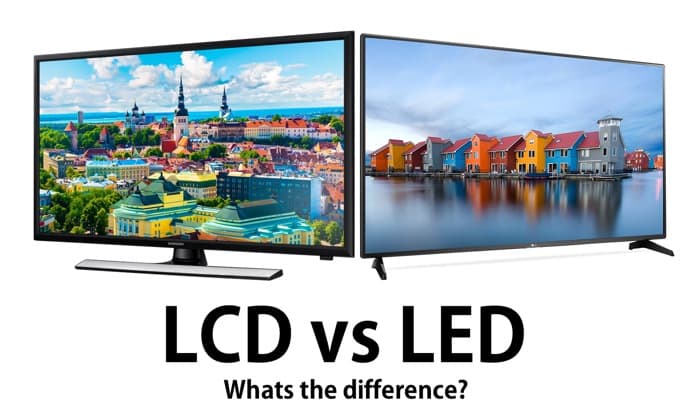LCD Vs Led Comparison – Which One Is The Best?

Are you in the market for a new display screen but feeling overwhelmed by the abundance of options? Two common choices are LCD and LED screens, but how do you know which one is the best for you?
Understanding the differences between these two types of screens can help you make an informed decision and ensure that you get the most out of your investment.
LCD, or liquid crystal display, screens have been around for years and are known for their sharp images and bright colors. LED, or light-emitting diode, screens are a newer technology that boasts even more impressive image quality and energy efficiency.
So which one is the better choice? In this article, we’ll compare the two technologies across several important categories to help you determine which one is the best fit for your needs.
Key Takeaways
- LED screens are more energy-efficient and produce brighter, sharper images compared to LCD screens.
- LED TVs have better color accuracy and wider viewing angles, while LCD TVs struggle with color accuracy and have a limited viewing angle.
- LED TVs have a longer lifespan, are more durable, and widely available compared to LCD TVs.
- MicroLED technology and AI-powered displays offer even better brightness, color accuracy, energy efficiency, and real-time image correction.
How Do LCD and LED Screens Work?
You’re probably wondering how LCD and LED screens work, so let me break it down for you in a way that will transport you into the world of pixels and backlighting.
LCD screens use liquid crystals that change their orientation when an electric current is applied to them. This allows light to either pass through or be blocked, creating the images that you see on the screen. The liquid crystals themselves don’t emit light, so a backlight is needed to illuminate the display.
This backlight can be made up of fluorescent lamps or LED lights, which are placed behind the screen. The amount of light that passes through the liquid crystals is controlled by a transistor for each pixel, which determines the intensity and color of the image.
LED screens, on the other hand, use light-emitting diodes to produce both the backlight and the image. The diodes emit light when an electric current is applied to them, and this light is then filtered through RGB (red, green, blue) color filters to create the necessary hues.
LED screens are generally more energy-efficient than LCD screens and can produce brighter, sharper images. However, they’re also more expensive to produce and may suffer from issues such as uneven lighting and color accuracy.
Comparison table LED vs. LCD
| LCD | LED | |
|---|---|---|
| Benefits |
|
|
| Drawbacks |
|
|
Understanding Backlighting and Contrast
Get ready to discover the magic behind the way your favorite shows and movies are brought to life through the perfect combination of backlighting and contrast.
Backlighting is an essential feature of both LCD and LED screens, but the way it works differs between the two. LCD screens use a fluorescent backlight placed behind the screen to illuminate the pixels, while LED screens use an array of light-emitting diodes (LEDs) to light up the pixels.
The advantage of LED backlighting is that it can be controlled in a more precise and customizable way than fluorescent backlighting. This allows for greater contrast ratios, meaning the difference between the darkest and brightest parts of an image can be more distinct. This leads to sharper images, deeper blacks, and brighter whites, resulting in a more immersive viewing experience.
However, LCD screens can also achieve high contrast ratios by using local dimming, which dims the backlight in certain areas to enhance contrast. Ultimately, the choice between LCD and LED screens comes down to personal preference and the specific needs of the user.
Energy Efficiency and Cost
Saving energy and money is a concern for many people when choosing a television. LED TVs are known for being more energy-efficient than LCD TVs. This is because LED TVs use light-emitting diodes to backlight the screen, which consumes less energy than the cold cathode fluorescent lights used in LCD TVs.
In addition to being more energy-efficient, LED TVs are also generally less expensive to operate. The lower energy consumption translates to lower electricity bills over time. Although LED TVs may have a higher upfront cost than LCD TVs, the long-term savings in energy costs can make them a more cost-effective choice in the long run.
Ultimately, if you’re looking for a TV that’s both energy-efficient and cost-effective, then an LED TV is the way to go.
Color Accuracy and Viewing Angles
For a truly immersive viewing experience, it’s important to consider color accuracy and viewing angles when choosing a television. LED TVs typically have better color accuracy than LCD TVs, as they have a wider color gamut and can display more colors. This means that LED TVs can produce more accurate and vibrant colors, making images appear more lifelike.
LCD TVs, on the other hand, may struggle to display certain colors accurately, resulting in a less realistic image. Viewing angles are also an important factor to consider when choosing between LCD and LED TVs.
LED TVs typically have better viewing angles than LCD TVs, as they use an edge-lit backlighting system that allows for a wider viewing angle. This means that you can sit at different angles to the TV and still see a clear and accurate picture. LCD TVs, on the other hand, may have a limited viewing angle, which can result in a distorted image if you are not sitting directly in front of the screen.
Overall, if you value color accuracy and wide viewing angles, an LED TV may be the better choice for you.
Lifespan and Durability
You’ll be interested to know that considering the lifespan and durability of a television is crucial when making your purchase, as it can affect the longevity and reliability of your investment. When it comes to LCD vs LED TVs, there are some differences in terms of their durability and lifespan.
LCD TVs have a lifespan of around 50,000 to 75,000 hours, while LED TVs have a lifespan of around 100,000 hours. However, it’s important to note that both types of TVs can last for many years if properly maintained. In terms of durability, LED TVs are generally more durable than LCD TVs due to their construction. LED TVs use a solid-state design, which means that they have fewer moving parts and are less likely to suffer from mechanical failures. Additionally, LED TVs are less susceptible to damage from physical impact or vibration than LCD TVs.
| TV Type | Lifespan | Durability |
|---|---|---|
| LCD | Around 50,000 to 75,000 hours | Less durable due to more moving parts |
| LED | Around 100,000 hours | More durable due to solid-state design |
When making your decision between LCD vs LED TVs, it’s important to consider the lifespan and durability of each type. While LED TVs generally have a longer lifespan and are more durable than LCD TVs, both types of TVs can last for many years if properly maintained. Ultimately, the choice between LCD and LED will depend on your personal needs and preferences.
Availability and Compatibility
If you’re looking to upgrade your TV, it’s important to consider the availability and compatibility of the options on the market. LED TVs are more widely available and compatible with other devices. They’re compatible with gaming consoles, DVD players, and streaming devices, making it easier to integrate them into your entertainment setup. LED TVs are also available in a range of sizes and prices, making it easier to find one that fits your budget and space requirements.
On the other hand, LCD TVs are becoming less common and may be harder to find. They’re also less compatible with other devices, especially newer ones, which can be frustrating for those who want to connect multiple devices to their TV. However, if you’re looking for a budget-friendly option, LCD TVs may be a good choice. They’re often less expensive than LED TVs.
Ultimately, it’s important to consider your specific needs and preferences when deciding between an LCD and LED TV.
Choosing the Right Screen for Your Needs
When it comes to choosing the right screen for your needs, it’s important to consider what you’ll be using it for and what features are most important to you. Are you using it for gaming or watching movies? Or maybe you need it for work purposes such as graphic design or video editing. Whatever the case may be, the type of screen you choose will greatly impact your overall experience.
To help you make an informed decision, consider the following table that compares LCD and LED screens in terms of their features and benefits:
| Features | LCD Screens | LED Screens |
|---|---|---|
| Energy Efficiency | Less efficient compared to LEDs | More energy-efficient |
| Picture Quality | Can have a lower contrast ratio and color accuracy | Better contrast and color accuracy |
| Price | Generally less expensive compared to LEDs | More expensive |
Considering these factors, you can determine which type of screen will best suit your needs. If you’re looking for a more cost-effective option and don’t mind sacrificing some picture quality, LCD screens may be the way to go. However, if you value energy efficiency and top-notch picture quality, then LED screens may be worth the investment. Ultimately, it’s up to you to decide what features are most important to you and what will provide the best viewing experience.
Future Developments in Display Technology
Get ready to experience the future of display technology with exciting advancements on the horizon. One of the most promising developments is the emergence of MicroLED technology. This technology offers several benefits over traditional LED and LCD displays, including higher brightness levels, better color accuracy, and improved energy efficiency. MicroLED displays also have a longer lifespan and are more durable than their counterparts, making them a great investment for the future.
Another exciting development is the integration of Artificial Intelligence (AI) into display technology. AI-powered displays can adapt to their surroundings and adjust their brightness, contrast, and color levels accordingly. This not only provides a better viewing experience but also helps reduce energy consumption. With AI, displays can also detect and correct image distortion in real-time, making them ideal for gaming and virtual reality applications.
As these advancements continue to develop, we can expect to see even more impressive displays in the future.
Conclusion
So, which is the best: LCD or LED? Well, it all depends on your needs and preferences.
LCD screens are better if you need a budget-friendly option with good color accuracy and viewing angles, while LED screens are ideal if you want a high-end display with excellent energy efficiency and contrast.
Both technologies have their strengths and weaknesses, so it’s important to consider factors like energy efficiency, cost, color accuracy, viewing angles, lifespan, and compatibility when choosing the best screen for your needs.
However, with ongoing advancements in display technology, we can expect even more impressive screens to hit the market in the future. So stay tuned!




